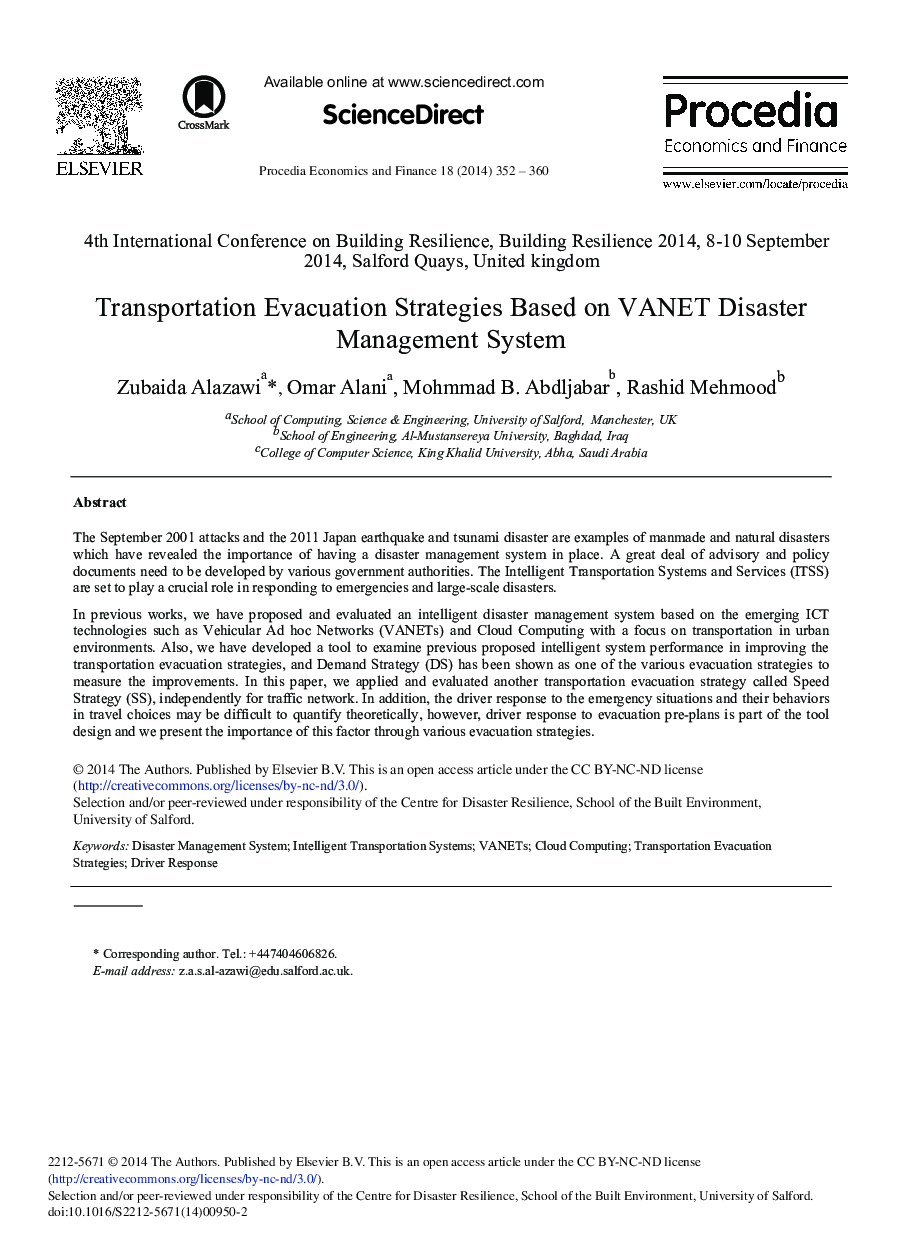| Article ID | Journal | Published Year | Pages | File Type |
|---|---|---|---|---|
| 981514 | Procedia Economics and Finance | 2014 | 9 Pages |
The September 2001 attacks and the 2011 Japan earthquake and tsunami disaster are examples of manmade and natural disasters which have revealed the importance of having a disaster management system in place. A great deal of advisory and policy documents need to be developed by various government authorities. The Intelligent Transportation Systems and Services (ITSS) are set to play a crucial role in responding to emergencies and large-scale disasters.In previous works, we have proposed and evaluated an intelligent disaster management system based on the emerging ICT technologies such as Vehicular Ad hoc Networks (VANETs) and Cloud Computing with a focus on transportation in urban environments. Also, we have developed a tool to examine previous proposed intelligent system performance in improving the transportation evacuation strategies, and Demand Strategy (DS) has been shown as one of the various evacuation strategies to measure the improvements. In this paper, we applied and evaluated another transportation evacuation strategy called Speed Strategy (SS), independently for traffic network. In addition, the driver response to the emergency situations and their behaviors in travel choices may be difficult to quantify theoretically, however, driver response to evacuation pre-plans is part of the tool design and we present the importance of this factor through various evacuation strategies.
